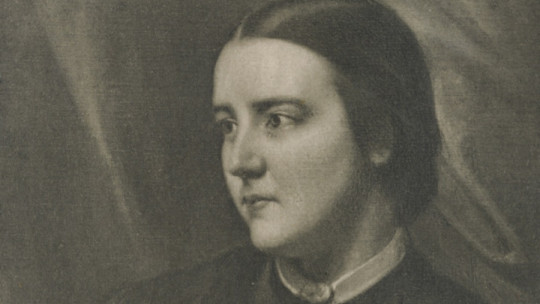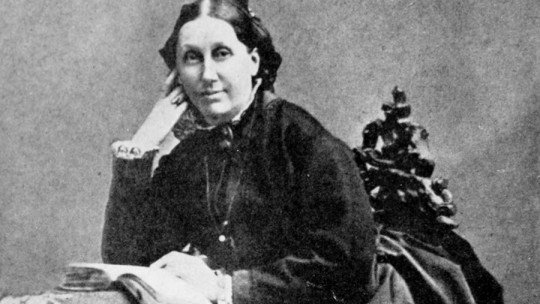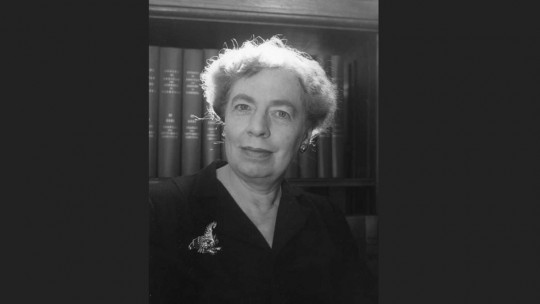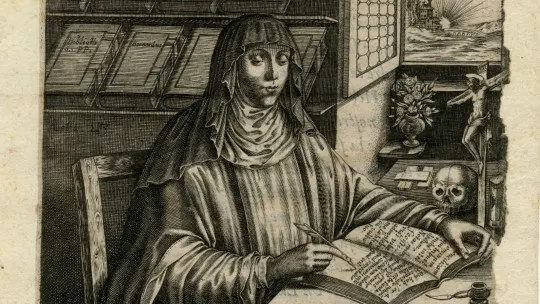Sophia Jex-Blake was a doctor, also dedicated to teaching medicine to women and being an active fighter and defender of women’s rights.
Above all, it focused on ensuring that women had access to study at all universities, thus having the possibility of receiving the same training as men. This path was not easy and she had different opponents, even professional colleagues who opposed her way of thinking.
Given her continuous struggle, she finally managed to become the first female doctor in Scotland and one of the first in the United Kingdom, and managed to found two medical schools for women, also a revolutionary and innovative fact at the time.
In this Sophia Jex-Blake biography You will find the most important aspects in the life of this leading figure in Medicine and in her activism.
Brief Biography of Sophia Jex-Blake
Sophia Louisa Jex-Blake was born on January 21, 1840 in Croft Place, Hastings, England She was the youngest of six children, although the three eldest did not reach the age of majority, and she was raised in a family of the upper bourgeoisie with conservative and religious beliefs, followers of the Evangelical movement and belonging to the Anglican Church.
His father was Thomas Jex-Blake, who was a jurist, and his mother, Mary Cubitt. The two siblings who did survive were Thoma Jex-Blake, eight years older than Sophia and who would become dean of Wells Cathedral, and Katherine Jex-Blake who would devote herself to teaching at Girton College, Cambridge.
Until she was eight years old, Jex-Blake was educated at home by her parents ; It would not be until 1848 when she was enrolled in her first private boarding school, although she would not last long there, spending most of her childhood moving from one school to another.
From a very young age she showed interest in writing, already highlighting her imaginative abilities and her rebellious spirit.
Young years
In 1857 Sophia Louisa Jex-Blake traveled to Wales, England, where she collaborated at the Betws y Coed school for boys an experience that made her desire to study and work as a teacher grow.
So in 1858 she decided to move to London to enroll as a student at Queen’s College. Shortly after beginning his university education, he was offered the possibility of giving revision classes in Mathematics, a task he would carry out until 1861, although he had to work the first term without receiving remuneration, since his father was proud of the offer he received. They had made his daughter but it didn’t seem right to him that they should pay him for it.
It was in 1860 when She would meet Octavia Hill, who was a year older than Sophia and was teaching at the Working Women’s College ; An intense friendship would form between the two women, which would be truncated by the demands and pressures of Sophie’s parents, who was greatly affected by such distancing.
Stage of work as a teacher
With the purpose of continuing her studies to be a teacher, she moved to Edinburgh in 1862, where she studied mathematics and German, being a student at the University Classes for Women. It was during this period of time when She was visited by Elizabeth Garrett, who would be the first British woman to graduate in medicine
Thus, with the desire to train and work in different schools for women, she approached her parents about the possibility of traveling to France, although they did not accept and she would end up going to Germany, where she would teach for 8 months at the Grand Ducal Institute in Mannheim. . After completing her replacement as a teacher in Germany, she decided to return to England.
After working as a teacher in Manchester, decided to go to see the women’s educational institutions in North America Thus, on May 27, 1865, she, along with her friend Isabella Bain, would leave for Boston, where she worked as a medical associate at the New England Hospital for Women and Children and met another of the important women in the life of she, Dr. Lucy Sewall.
To learn more about education in the United States, she decided to visit different states, being surprised by the educational evolution and the greater tolerance regarding differences of sex, race or religion
Thus, after visiting different places in North America, she returned to Boston, where she will continue working at the New England Hospital performing administrative tasks and visiting women who lived alone. This is how she, working in the hospital environment, considers her future and what her true vocation was, whether teaching or medicine.
Beginnings in Medicine
In 1867 Sophia Louisa Jex-Blake published her book “A visit to some American schools and colleges”. That was the year also the year in which he would finally decide to study Medicine She therefore enrolled at the New England Female College in an anatomy course, but despite liking the subject taught, she believed that the level that women received was very low compared to that of male universities. For this reason, she decided to send a letter to Harvard Medical School to ask to be admitted, although they would soon inform her of her refusal, alleging that Harvard did not admit female students.
After rejection by male universities, Sophie tried repeatedly to be admitted to Harvard, in 1868 she chose to go to New York to continue her teaching since she knew of a medical school, the New York Infirmary for Women, directed by Elizabeth Blackwell. Although her training at this school would be short-lived since in the winter of that year she decided to return to England and stay with her mother after the death of her father.
Between 1869 and 1874, Sophie He wanted to start his medical training in England, so he decided to go to the University of Edinburgh to ask to be accepted. At first she was denied the place because she was the only woman interested, but after getting the participation of other women, a group known as “The Edinburgh Seven”, she was able to enter as a student.
Thus, he completed all the subjects and hospital practices to be able to graduate from that Faculty of Medicine, but he had to combine his studies with the continuous fight to obtain the same treatment as men, having to resort to the legal field with the help of lawyers, a fact which took up a lot of his time and contributed to him failing two of the exams necessary to graduate.
Following his failures, Jex-Blake confronted the examining board saying that they had been unfair with the grade they gave him; The examiners did not agree and Sophie did not have the support of any of her training partners either. So that In 1874 she founded the London School of Medicine for Women also remaining active in the fight to gain access to Universities.
In 1876 she took the midwife exam at the College of Surgeons in order to access the practice of medicine, but the Obstetrics Society objected, writing a letter and thus preventing the exam from being taken. In this way, she Sophie decided to travel abroad to take the exams and present her doctoral thesis on puerperal fever and thus be able to obtain the title of Doctor of Medicine in January 1877.
Upon returning to England in order to be part of the Register of Doctors of England, she had to appear before the only Examining Court that admitted women at that time, thus becoming the fifth woman to gain access to such Register.
Consolidation of your professional career
In 1878 Sophia Jex-Blake She moved back to Edinburgh to start practicing as a doctor, opening her own clinic and treating poor women During that period she was no longer director at the London School of Medicine for Women, but she kept in touch with her, also being an activist in the fight to obtain the right to vote for women.
In 1881, after the death of her mother, Sophie entered a depressive state that made her stay away from the practice of Medicine for 2 years. Similarly, in 1882 the Council of the London School of Medicine for Women, of which Sophie was a member, voted who would be the dean, a position eventually taken by Elisabeth Garrett, who had initially opposed the schools of Medicine. medicine for women. Given her disagreement with this choice, she finally decided in 1897 to leave the school of which she had been the creator.
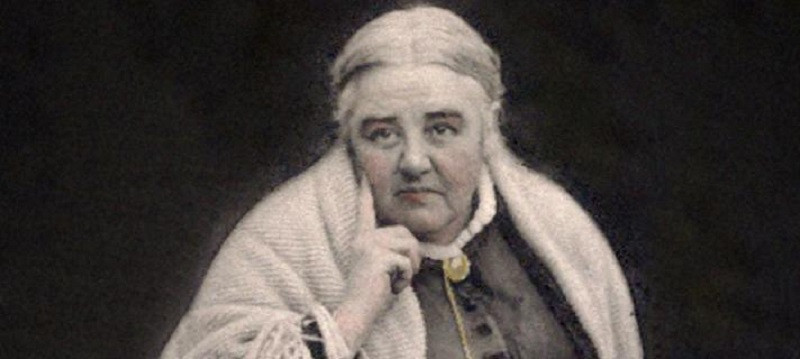
In mid-1883 he reopened another surgery, which in 1885 became the Edinburgh Hospital And Dispensary for Women already counting on the help of a midwife and another doctor, Catherine Urquhart.
Likewise, in that same year a new medical school for women opened in Edinburgh. Although with this school she would not have any luck either, since a series of events occurred that created rivalries, thus forming two groups; The opposition was led by Elise Inglis who finally decided to open another medical school for women in Edinburgh, thus causing the closure in 1898 of the school created by Sophia.
Last years of life
A year later, in 1899, Sophia Jex-Blake decided to retire and return to Sussex County, where she had lived as a child. So that sold his practice at Bruntsfield Lodge, which was renamed Bruntsfield Hospital serving women until 1989.
In this way, he took up residence in Windydene, in Rotherfield, with fellow doctor Margaret Todd, who was rumored to be his romantic partner. It was common for them to receive visits from both medical professionals and other disciplines such as literature and art.
Finally, Sophie Jex-Blake died on June 7, 1912 in Wyndydene and was buried in Rotherfield, Sussex, England.

